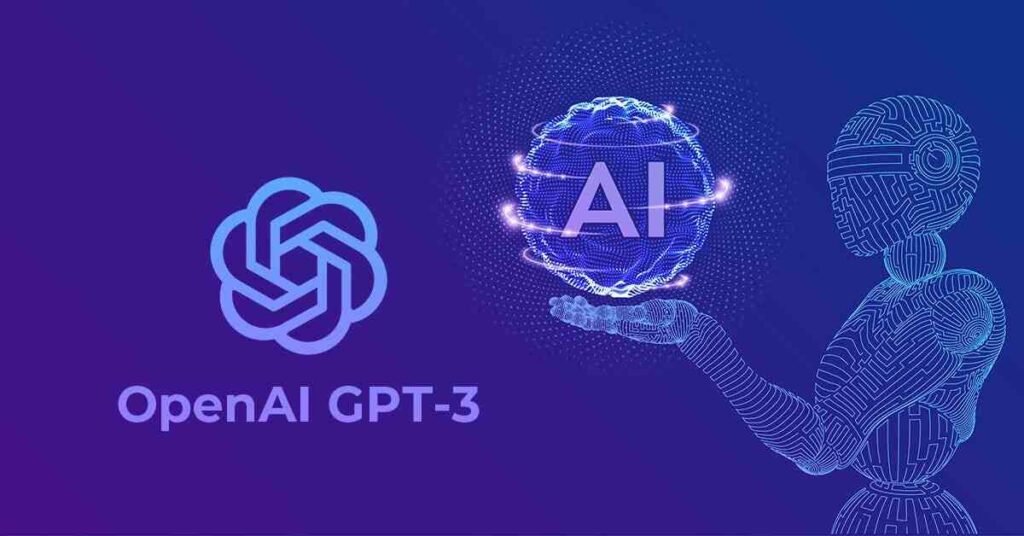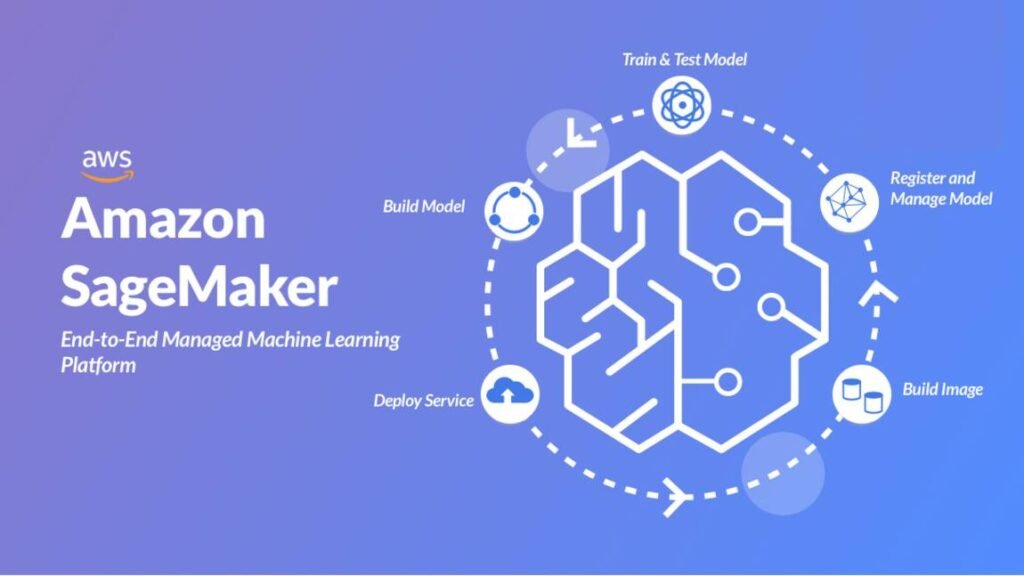technology
12 Top AI Technologies in 2024: AI Landscape Unveiled

Top AI Technologies: Delve into the realm of cutting-edge AI technologies reshaping industries. From OpenAI’s breakthrough GPT-3 to powerhouses like Tensor Flow, PyTorch, IBM Watson, and more – discover how these innovations redefine the future.
In the swiftly evolving landscape of artificial intelligence, 2024 marks a pivotal moment. The horizon is adorned with a diverse array of AI technologies, each contributing its unique prowess to revolutionize businesses across sectors. This comprehensive article unveils the transformative potential of top AI technologies, showcasing their impact, capabilities, and the intricate nuances shaping the AI landscape.
1. OpenAI’s GPT-3 Top AI Technologies

- AI Technologies: Artificial Intelligence has seen unprecedented growth, and OpenAI’s GPT-3 stands as a testament to this evolution. This article delves deep into the workings, applications, and impacts of GPT-3 in various industries.
- GPT-3, short for Generative Pre-trained Transformer 3, represents a leap forward in natural language processing (NLP). Its sheer size, with 175 billion parameters, enables it to generate remarkably coherent human-like text. From aiding in content creation, and answering queries, to even coding assistance, GPT-3 showcases a myriad of applications.
- In the realm of content creation, GPT-3 has been a game-changer. Its ability to understand context and generate coherent text has streamlined the process for writers, marketers, and developers. Moreover, its versatility extends to education, customer service chatbots, and even creative writing.
- However, despite its vast capabilities, GPT-3 does have limitations. Issues related to bias in generated content, potential misuse in creating fake news, and ethical concerns surrounding its use are important aspects that cannot be overlooked.
2. Tensor Flow Top AI Technologies


- Tensor Flow, developed by Google Brain, has established itself as a cornerstone in the realm of machine learning and artificial intelligence. Its open-source nature and robust architecture make it a preferred choice among developers and researchers worldwide.
- At its core, TensorFlow provides a comprehensive ecosystem for building machine learning models. Its flexible architecture allows seamless deployment across various platforms, including CPUs, GPUs, TPUs, and even mobile devices. This versatility empowers developers to create and train models efficiently.
- The applications of Tensor Flow are diverse. From image and speech recognition to natural language processing and recommendation systems, TensorFlow’s wide array of pre-built models and tools simplifies complex tasks. Its scalability further enhances its utility, enabling the development of models for both small-scale applications and large-scale enterprise solutions.
- When comparing Tensor Flow with other frameworks like PyTorch AI Technologies, its unique features and community support stand out. While PyTorch offers simplicity and flexibility, Tensor Flow excels in scalability and production-level deployment. The choice between these frameworks often depends on the specific requirements and preferences of developers and organizations.
3. PyTorch

- PyTorch, an open-source machine learning library developed by Facebook’s AI Research lab, has gained substantial traction among developers and researchers. Renowned for its simplicity and ease of use, PyTorch offers a dynamic computational graph, allowing for seamless model building and experimentation.
- Compared to TensorFlow, PyTorch’s dynamic nature enables developers to alter networks on the fly, facilitating a more intuitive debugging process. This flexibility lends itself well to research-oriented projects where experimentation and rapid prototyping are essential.
- PyTorch’s popularity stems from its Pythonic syntax and straightforward APIs, making it an attractive choice for newcomers in the field of machine learning. Its user-friendly interface doesn’t compromise performance, allowing for efficient execution on various hardware architectures.
- While PyTorch’s simplicity is a boon for researchers and hobbyists, Tensor Flow’s static computational graph grants it an edge in production-level deployments and scalability. However, PyTorch’s community-driven development and focus on user experience contribute significantly to its widespread adoption.
- The choice between PyTorch and TensorFlow often boils down to the specific use case, preferences, and level of expertise of the developers. Both frameworks have distinct advantages, and the decision usually depends on the project’s requirements and the team’s comfort with the respective tool.
4. IBM Watson Top AI Technologies

- IBM Watson, a pioneering AI platform developed by IBM, represents a confluence of advanced technologies aimed at solving complex problems across diverse industries. Watson’s suite of cognitive computing capabilities encompasses AI, machine learning, and natural language processing, enabling it to analyze vast amounts of unstructured data.
- One of Watson’s significant contributions is its ability to comprehend natural language. This feature facilitates interactions between humans and machines, empowering businesses to extract valuable insights from data more efficiently. Watson’s cognitive computing prowess extends to areas like healthcare, finance, and customer service, revolutionizing how industries leverage AI Technologies for decision-making and problem-solving.
- Watson’s impact on the healthcare sector, for instance, has been transformative. Its ability to analyze medical data and assist healthcare professionals in diagnosis and treatment recommendations has enhanced patient care and outcomes. Similarly, in finance, Watson aids in risk assessment, fraud detection, and personalized financial advice, augmenting decision-making processes.
5. Microsoft Azure Cognitive Services
- Microsoft Azure Cognitive Services represents a comprehensive suite of AI tools and APIs designed to infuse intelligent capabilities into applications. Leveraging machine learning models, Azure Cognitive Services empowers developers to integrate vision, speech, language, and decision-making capabilities into their applications.
- The key advantage of Azure Cognitive Services lies in its ease of integration with existing applications and services. Its pre-built AI technology models, including computer vision, language understanding, and text analytics, enable developers to add advanced functionalities without delving deep into the complexities of AI development.
- In practical terms, Azure Cognitive Services finds applications in various industries. For instance, its computer vision capabilities facilitate image analysis, enabling businesses to automate tasks like object detection, facial recognition, and content moderation. Moreover, its language understanding functionalities power chatbots, language translation, and sentiment analysis, enhancing customer engagement and user experiences.
6. Google Cloud Top AI Technologies Platform
- Google Cloud AI Platform stands as a robust and versatile toolset catering to various AI and machine learning needs. This platform encompasses a suite of services and tools designed to facilitate the development, deployment, and management of machine learning models.
- At its core, the Google Cloud AI Platform offers a range of capabilities, including data preparation, model training, and model serving. Its integration with Google Cloud infrastructure provides scalability and reliability, enabling businesses to leverage AI at scale.
- One of the notable features of the AI Technologies Platform is its AutoML capabilities. AutoML simplifies the model development process by automating tasks like feature engineering and hyperparameter tuning. This democratizes AI by allowing individuals without extensive machine learning expertise to create high-quality models.
- Furthermore, Google Cloud AI Platform’s versatility extends to various industries and use cases. From predictive maintenance in manufacturing to personalized recommendations in e-commerce, its suite of tools caters to diverse business needs, driving innovation and efficiency.
- Despite its strengths, organizations utilizing the Google Cloud AI Platform must address challenges related to data security, model interpretability, and ethical AI practices. Ensuring data privacy and fairness in AI models remains a critical aspect of leveraging these tools effectively.
7. Amazon SageMaker

- Amazon SageMaker, an integral part of Amazon Web Services (AWS), offers a comprehensive machine-learning platform designed to simplify the entire machine-learning workflow. Its end-to-end capabilities cover data labeling, model training, and deployment, streamlining the process for developers and data scientists.
- The versatility of SageMaker is evident in its diverse set of tools and services. From built-in algorithms and frameworks to custom model building using Jupyter notebooks, SageMaker caters to varying levels of expertise and project requirements.
- An essential feature of Amazon SageMaker is its emphasis on scalability and cost-efficiency. Its managed services reduce the complexity of machine learning infrastructure, allowing businesses to focus on model development and innovation. Additionally, SageMaker’s integration with AWS services facilitates seamless deployment and scaling of models in production environments.
- Amazon SageMaker finds applications across industries, enabling predictive maintenance in manufacturing, personalized recommendations in e-commerce, and data analysis in healthcare, among other use cases. Its ability to handle large-scale machine learning tasks efficiently contributes to its popularity among enterprises.
8. UiPath Top AI Technologies
- UiPath stands as a leading robotic process automation (RPA) platform that integrates seamlessly with AI technologies, revolutionizing how businesses automate their processes. Its user-friendly interface and robust capabilities empower organizations to automate repetitive tasks, driving efficiency and productivity.
- The core strength of UiPath lies in its ability to automate a wide range of tasks across various domains without the need for extensive programming knowledge. Its visual designer allows users to create automation workflows through a drag-and-drop interface, making it accessible to both developers and non-technical users.
- When coupled with AI technologies, UiPath extends its capabilities beyond basic task automation. Integrating AI enables UiPath robots to perform more complex tasks involving cognitive decision-making, natural language processing, and machine learning-based predictions.
- The impact of UiPath on businesses is profound, leading to increased operational efficiency, reduced error rates, and cost savings. Its integration with AI technologies amplifies these benefits by enabling intelligent automation, where robots learn from data and adapt to evolving scenarios.
9. Chatbot Platforms (e.g., Dialogflow, Microsoft Bot Framework)
- Chatbot platforms like Dialogflow and Microsoft Bot Framework have revolutionized customer interactions and service delivery. These platforms leverage AI and natural language processing to create conversational agents that simulate human-like conversations.
- Dialogflow, powered by Google Cloud, offers a user-friendly interface and supports multiple channels, allowing developers to create chatbots for websites, mobile apps, and voice assistants. Its machine-learning capabilities enable it to understand user intents, extract relevant information, and provide contextually accurate responses.
- Similarly, Microsoft Bot Framework provides a comprehensive set of tools for building conversational AI technology experiences. Its integration with Azure Cognitive Services equips developers with powerful natural language understanding and translation capabilities, enhancing the chatbot’s functionality.
- These chatbot platforms find applications across industries, enhancing customer support, streamlining sales processes, and improving user engagement. Their ability to automate routine interactions and provide personalized experiences contributes significantly to customer satisfaction and operational efficiency.
10. Salesforce Einstein
- Salesforce Einstein, an AI-powered platform integrated into the Salesforce ecosystem, empowers businesses to make smarter decisions, automate tasks, and personalize customer experiences. Its capabilities span across sales, marketing, service, and commerce, enhancing various facets of customer relationship management (CRM).
- One of the standout features of Salesforce Einstein is its predictive analytics prowess. By analyzing vast amounts of data, Einstein’s machine learning algorithms predict future outcomes, enabling sales teams to prioritize leads, forecast sales, and make data-driven decisions.
- Moreover, Einstein’s AI Technologies capabilities facilitate automation in various business processes. From automating repetitive tasks to recommending next-best actions, it optimizes workflows and allows employees to focus on high-value activities, thereby improving productivity.
11. Tableau Top AI Technologies

- Tableau, renowned for its data visualization capabilities, has evolved to incorporate AI-driven features. Enabling users to derive deeper insights and make data-driven decisions efficiently. Its intuitive interface and powerful analytics tools make it a popular choice among data professionals.
- The integration of AI within Tableau empowers users to uncover patterns, trends, and correlations within data sets. Features like Explain Data utilize machine learning algorithms to automatically analyze data and provide intuitive explanations, making complex insights more accessible.
- Moreover, Tableau’s integration with natural language processing (NLP) enables users to interact with data using conversational queries. This natural language interface simplifies data exploration and analysis. Allowing users to derive insights without the need for complex queries or technical expertise.
- Tableau’s impact spans across industries, aiding in data-driven decision-making in areas such as finance, healthcare, and marketing. Its ability to visualize data and communicate insights effectively makes it a valuable asset for organizations seeking to leverage their data for strategic advantage.
12. H2O.ai
- H2O.ai represents a leading open-source AI Technologies platform designed to democratize AI and machine learning for enterprises. Its suite of tools and libraries caters to various aspects of AI development, from data preprocessing to model deployment.
- The core strength of H2O.ai lies in its emphasis on simplicity and scalability. Its user-friendly interface and robust algorithms enable data scientists and developers to build, train, and deploy machine learning models efficiently.
- H2O.ai’s AutoML functionality is particularly noteworthy, as it automates the process of model selection, hyperparameter tuning, and feature engineering. This feature simplifies the model development process, making it accessible to a broader audience.
- Furthermore, H2O.ai’s comprehensive support for various machine learning algorithms. Its ability to integrate with popular programming languages and frameworks enhances its versatility and adoption across industries.
Read more: Best Free Website Hosting






